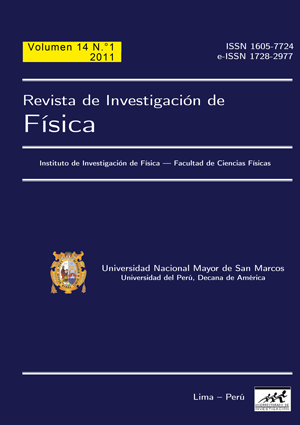Climatic caracterization of the atmospheric circulation in south america
DOI:
https://doi.org/10.15381/rif.v14i01.8539Keywords:
Reanalysis, atmospheric circulation, anticyclone, wind, precipitation.Abstract
In the present paper, using the data obtained by Reanalysis we identify the main patterns of atmospheric circulation in South America. For the processing of information, we made not distinction between El Niño, and No El Niño years, considering only averages of the main meteorological variables for the patterns identification. By analyzing the graphs of atmospheric pressure and winds, it was identified that the surface circulation is governed mainly by the presence of anticyclones in the Pacific and South Atlantic, and high levels of the system called Alta Bolivia, whose influence is seen from 500 hPa. On the other hand, the rainfall patterns highlight the Intertropical Convergence Zone, ITCZ, the Convergence Zone of the South Atlantic, SACZ, and the coastal deserts are located along the coasts of Peru and Chile. The ITCZ oscillates near the Equator, with maximum values of precipitation and zonal winds, resulting from the converge of the wind systems of the northern and southern hemispheres.Downloads
Published
Issue
Section
License
Copyright (c) 2011 Miguel Saavedra, Martín Calvo, César Jiménez

This work is licensed under a Creative Commons Attribution-NonCommercial-ShareAlike 4.0 International License.
THE AUTHORS RETAIN THEIR RIGHTS:
a. The authors retain their trademark and patent rights, as well as any process or procedure described in the article.
b. The authors retain the right to share, copy, distribute, perform and publicly communicate the article published in the Revista de Investigación de Física (for example, place it in an institutional repository or publish it in a book), with an acknowledgment of its initial publication in the Revista de Investigación de Física.
c. The authors retain the right to make a subsequent publication of their work, to use the article or any part of it (for example: a compilation of their works, notes for conferences, thesis, or for a book), provided that they indicate the source. of publication (authors of the work, journal, volume, number and date).






